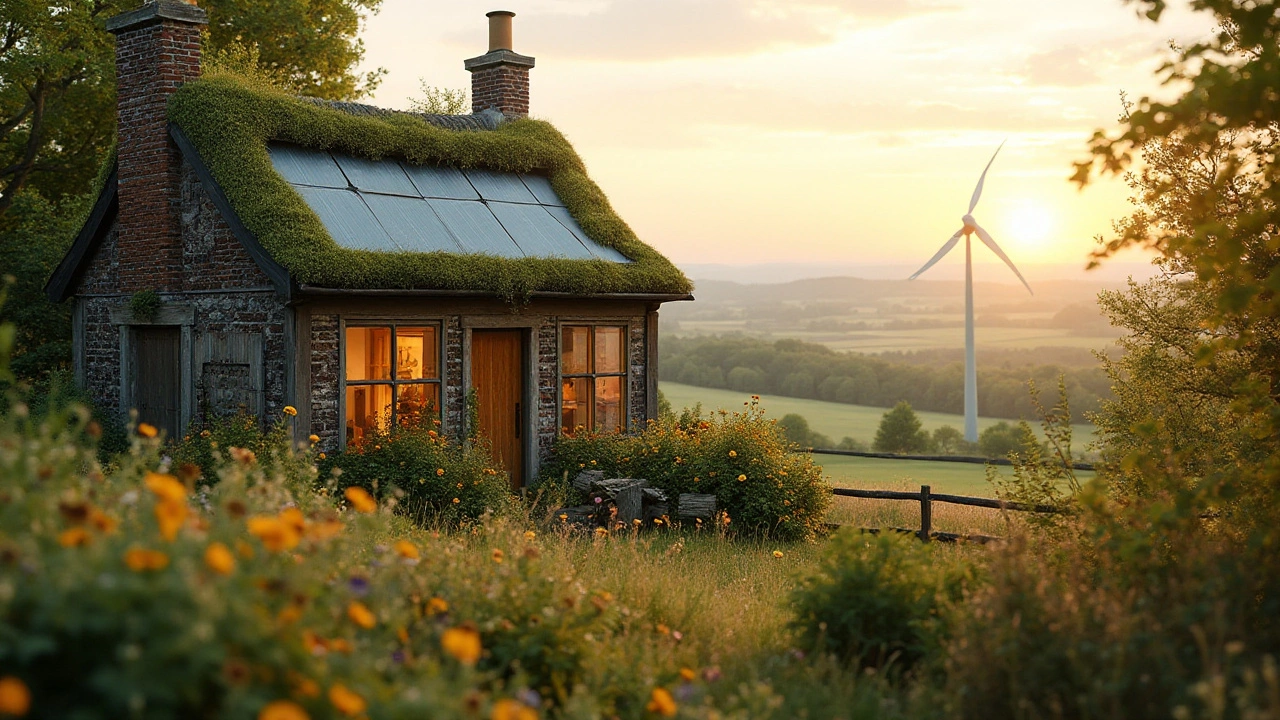Eco-Friendly Cottages: Your Guide to Green Getaways in the UK
If you love the countryside but care about your carbon footprint, an eco-friendly cottage is the perfect match. These houses blend comfort with low‑impact design, so you can unwind without feeling guilty. Below you’ll find the basics of what makes a cottage truly green and how to pick one that fits your needs.
What Makes a Cottage Eco‑Friendly?
First off, look for renewable energy sources. Many green cottages use solar panels or wind turbines to power lights, heating, and hot water. If you see a battery storage unit or a mention of a “green energy tariff,” that’s a good sign.
Insulation matters too. High‑performance walls, double‑glazed windows, and airtight doors keep heat inside, meaning the heating system works less. Some owners even add natural insulation like sheep’s wool or hempcrete, which reduces embodied carbon.
Water‑saving fixtures are another marker. Low‑flow showers, dual‑flush toilets, and rainwater harvesting systems cut the amount of fresh water you need. When a cottage recycles greywater for garden irrigation, you’re getting extra eco‑points.
Materials tell a story. Look for listings that mention reclaimed timber, locally sourced stone, or straw‑bale construction. These choices cut transport emissions and often last longer than mass‑produced alternatives.
Finally, check for certifications. The UK Green Tourism logo, BREEAM rating, or Eco‑Label badges show that an independent body has verified the cottage’s sustainability claims.
How to Choose the Right Green Cottage for Your Getaway
Start with your priorities. If solar power is a must, filter search results for “off‑grid” or “solar‑powered.” If you’re traveling with kids, make sure there’s child‑proofing and easy access to outdoor space – many eco‑cottages have fenced gardens that double as wildlife habitats.
Location plays a big role. Cottages in national parks or coastal areas often have strong conservation rules, which helps protect the surrounding nature. Plus, you’ll get scenic walks right outside your door.
Read the reviews. Guests usually mention whether heating bills were reasonable, how reliable the Wi‑Fi was, and if the eco‑features actually worked. A pattern of positive feedback on sustainability is a reliable indicator.
Budget isn’t a deal‑breaker. While some green cottages charge a premium, many offer competitive rates, especially in the shoulder season. Look for off‑peak discounts or longer‑stay specials; staying a week often reduces the per‑night cost.
Lastly, think about your own impact. Bring reusable dishes, a refillable water bottle, and choose local produce for meals. The more you align your habits with the cottage’s design, the greener your holiday becomes.
Eco-friendly cottages let you enjoy the British countryside while supporting low‑impact living. With the right research, you can find a spot that feels like home and does good for the planet at the same time.
Steps to Building Your Eco-Friendly Dream Cottage
Building an eco-friendly cottage involves choosing sustainable materials, utilizing renewable energy sources, and incorporating smart designs that harmonize with the environment. From selecting the right location to implementing green technologies, each step aims to reduce the ecological footprint without compromising comfort. This article provides guidance on essential elements like insulation, water conservation, and sustainable landscaping, turning your cottage into an oasis of environmental harmony. Readers will find practical tips and inspiring ideas to craft a cozy, green retreat.
